This Filet Mignon With Pomegranate Sauce brings restaurant-quality sophistication to the comfort of your home. Tender filet is cooked to perfection and paired with a savory and sweet pomegranate-infused sauce. Get the recipe and my best tips on how to cook filet mignon.
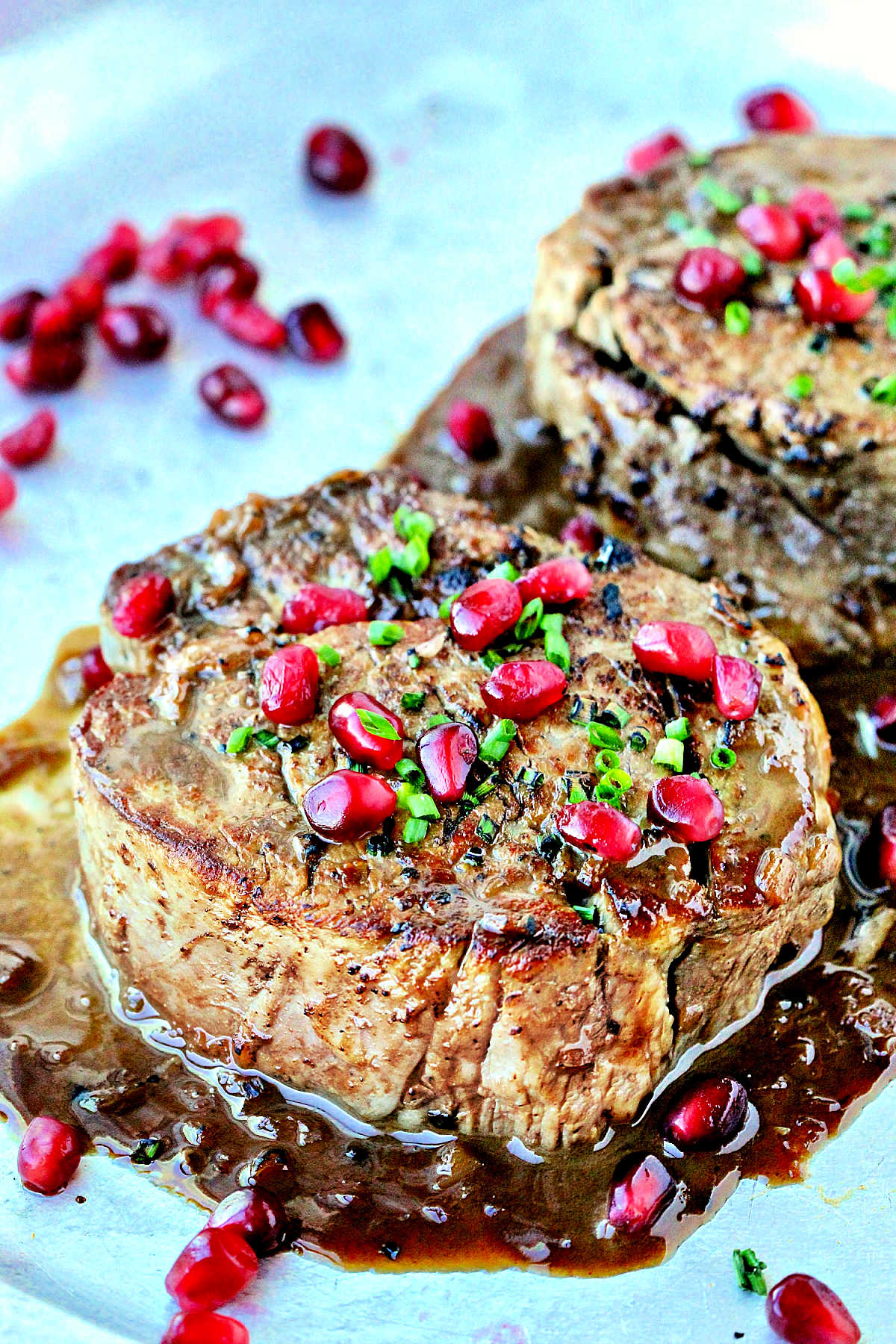
Filet mignon is one of those dishes that people love to order at restaurants but are intimidated to make at home, similar to scallops or risotto. But fear not! Once you've got the hang of the right technique, it's surprisingly straightforward.
My filet mignon with pomegranate sauce showcases the exquisite tenderness and flavor that filet mignon brings to the table. Imagine perfectly cooked filet mignon paired with a rich, sweet and savory pomegranate Dijon sauce.
I like to top the dish with ruby red pomegranate seeds for a pop of color and texture. This filet mignon with pomegranate sauce is perfect for special occasions, date nights, or holidays like Valentine's Day.
Jump to:
Why You'll Love This Dish
- Restaurant-Quality at Home: Impress your friends and family with a dish that rivals what you'd get at a high-end restaurant.
- Easy: Cooking filet mignon at home is not hard at all!
- Tender Perfection: Enjoy the exquisite tenderness of filet mignon, one of the most tender cuts of beef available.
- Versatile: This filet mignon with pomegranate sauce is perfect for special occasions, date nights, or any time you want to treat yourself to a gourmet meal.
Filet Mignon vs Tenderloin
When it comes to premium cuts of beef, the terms "filet mignon" and "tenderloin" are often used interchangeably, which can cause some confusion.
Both the tenderloin and filet are cut from the same part of the animal, the tenderloin. The tenderloin is a long piece of beef that you can use to make a full roast or cut other steaks from. It comes from an area near the rear of the animal that sits in front of the round cut and under the sirloin.
Filet mignon is a specific steak cut from the beef tenderloin. It is small in size, typically two inches in diameter, making it a perfect choice for an elegant presentation. Filet mignon is known for its exceptional tenderness and buttery texture.
Filet mignon is also considered a lean cut of beef. According to the United States Department of Agriculture (USDA), a lean cut of beef contains less than 10 grams of total fat, 4.5 grams or less of saturated fat, and less than 95 milligrams of cholesterol per 3.5 ounces (100 grams) of cooked meat.
How To Make Filet Mignon
Filet mignon, known for its tenderness, can be cooked using various methods. You can cook it in a skillet, roast it in the oven, grill it or sous vide it.
Pan-searing is my favorite way to cook filet mignon. It's a foolproof technique that brings out the best in this premium cut. It creates a perfectly caramelized exterior and a mouthwateringly tender interior.
See "How To Make Filet Mignon with Pomegranate Sauce Step-By-Step" section below to see exactly how to do this!
Ingredients
Ingredient notes and substitutions. See recipe card at the end of the post for full recipe details.
- Filet mignon- choose high-quality filet mignon steaks for the best flavor and tenderness. The marbling in the meat contributes to its richness.
- Oil- use a neutral-flavored oil with a high smoke point like canola, grape seed or safflower oil for searing.
- Shallots- used often in French cooking, they add a mild onion flavor. You can substitute sweet yellow onion.
- Garlic- adds depth of flavor to the sauce
- Pomegranate juice- adds a natural sweet and tangy flavor that complements the savory elements in the sauce
- Beef broth- I use reduced sodium broth to control the amount of sodium in the dish.
- Dijon mustard- adds a tangy kick to the sauce and also helps emulsify the sauce
- Butter- use cold, unsalted butter to whisk into the sauce at the end for a smooth, glossy finish.
- Pomegranate seeds- I like to garnish the dish with fresh pomegranate seeds for a pop of freshness, color, and texture.
How To Make Filet Mignon with Pomegranate Sauce Step-By-Step
- Preparation:
- Bring the filet mignon to room temperature and pat it dry with paper towels.
- Season generously with salt and pepper.
- Preheat the Pan:
- Use a heavy, oven-safe skillet, preferably cast iron.
- Heat the skillet over medium-high heat with a little oil until it's smoking hot.
- Searing:
- Carefully place the seasoned steaks in the hot pan, being careful not to overcrowd the pan.
- Sear for 2-3 minutes to achieve a golden-brown crust. Then, flip the steaks over.
- Finishing in the Oven:
- Transfer the skillet to a preheated oven to finish cooking.
- Use a meat thermometer to achieve your desired doneness: 125°F for medium-rare, 135°F for medium (the steak will continue to cook as it rests).
- Resting:
- Once cooked, let the filet mignon rest on a cutting board for several minutes.
- This allows the juices to redistribute, ensuring a juicy and tender steak.
- Making the Pan Sauce:
- Heat shallot and garlic in the pan drippings in the skillet and add the pomegranate juice and beef stock. Let it reduce by half, then lower the heat and whisk in the dijon mustard and cold butter.
- This is called "monter au beurre," a French culinary term that means to finish a sauce by whisking in cold butter. It's a technique used to add richness, flavor, and a glossy finish to sauces.
- Plate the Dish
- Serve the filet mignon with the pomegranate sauce. Garnish with pomegranate seeds and chives for a pop of color and texture.

Chef's Tips
- Be sure to bring the steak to room temperature for even cooking. Don't cook it straight from the refrigerator.
- Get your pan nice and hot. This will help ensure you get a nice caramelized exterior.
- Once the steak is in the pan, resist the urge to move it. Give it 2-3 minutes to develop a nice crust.
- How do you know when your steak is done? Use a meat thermometer and take the guesswork out of it. Remember, the steak will continue to cook after it comes out of the oven (this is called carryover cooking). Take it out of the oven at 125°F for medium-rare, 135°F for medium.

Meat Thermometer
Invest in a good meat thermometer and never overcook or undercook meat again!
This recipe is part of my Valentine's Day Dinner Menu.
Side Dishes To Pair With Filet Mignon

YOUR PATH TO WELLNESS STARTS HERE!
Get my best healthy recipes and tips sent straight to your inbox!
Recipe
Filet Mignon with Pomegranate Sauce
Equipment
Ingredients
- 2 filet mignon steaks (about 4 ounces each)
- Kosher salt and black pepper
- 3 teaspoons neutral-flavored oil like canola, grape seed or safflower, divided
- 1 tablespoon minced shallot
- 1 small clove garlic, minced
- ¼ cup pomegranate juice
- ½ cup reduced sodium beef stock
- ¾ teaspoon Dijon mustard
- 2 teaspoons cold unsalted butter
- 2 tablespoons pomegranate seeds for garnish (optional)
Instructions
- Preheat oven to 400°F.
- Season the steaks generously with salt and pepper on both sides. Heat 2 teaspoons oil in a large oven-safe skillet over medium high heat. Add the steaks to the pan and sear 2-3 minutes until a golden crust forms. Turn the steaks over and and cook another minute, then transfer the skillet to the oven.
- Cook steaks to desired doneness, about 6-10 minutes for medium rare depending on the thickness of the steaks. Carefully remove the skillet from the oven and place the steaks on a plate. Cover with foil to keep them warm while you make the sauce.
- Heat the skillet on the stove over medium heat and add the remaining teaspoon of oil. Add the shallots and garlic and cook 30 seconds until shallots start to soften. Add the pomegranate juice and stock and turn the heat up to high. Simmer until the sauce is reduced by half and slightly thickened, 3-4 minutes. Lower the heat and whisk in the mustard and butter. Season the sauce to taste with salt and pepper.
- Serve the filet mignon with the pomegranate Dijon sauce drizzled on top. Garnish with pomegranate seeds, if desired.
Notes
-
- Be sure to bring the steak to room temperature for even cooking. Don't cook them straight from the refrigerator.
-
- Get your pan nice and hot. This will help ensure you get a nice caramelized exterior.
-
- Once the steak is in the pan, resist the urge to move it. Give it 2-3 minutes to develop a nice crust.
-
- How do you know when your steak is done? Use a meat thermometer and take the guesswork out of it. Remember, the steak will continue to cook after it comes out of the oven (this is called carryover cooking). Take it out of the oven at 125°F for medium-rare, 135°F for medium.



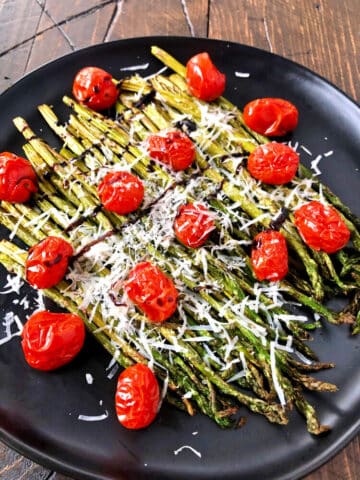
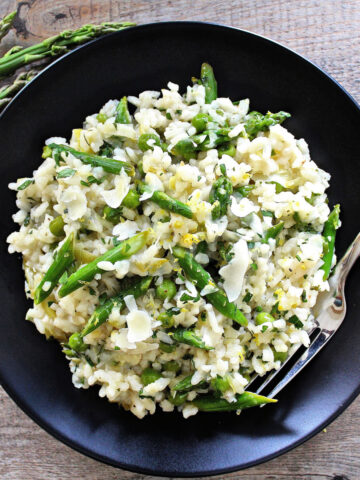
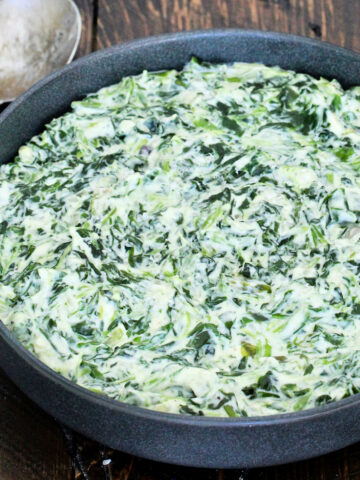
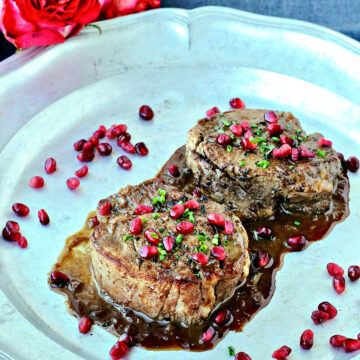
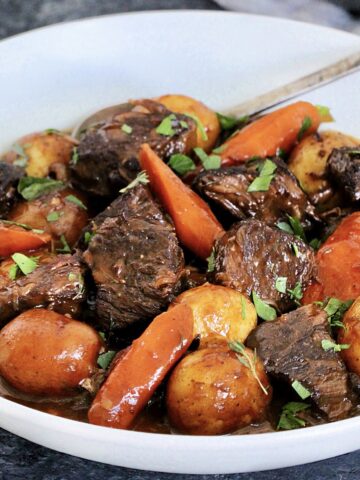

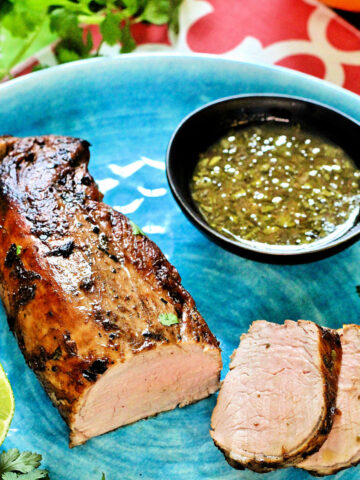

Comments
No Comments